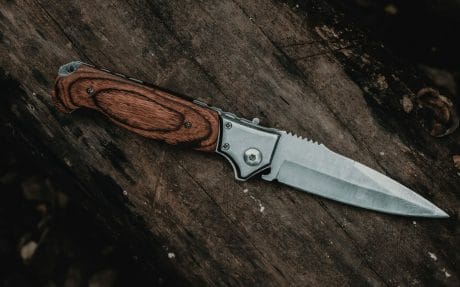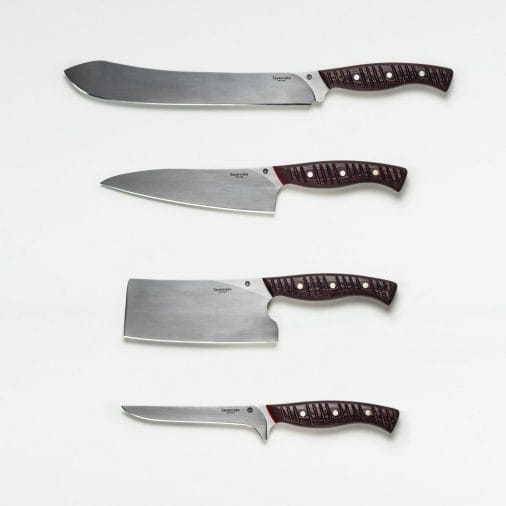If you’re like most people, you probably think that all knives are created equal. But the truth is, there are a lot of different types of knives out there, and not all of them are created equal. So how do you know if you’re looking at a cheap knife or a high-quality one?
There are a few ways to identify a knife with no markings.
- If the blade is completely smooth with no ridges or patterns, then the knife is unmarked.
- Carefully look at the hilt of the knife. If the hilt is smooth with no markings, then the knife is unmarked.
- Finally, If there is no serial number on any part of the knife, then the knife is unmarked.
Here are a few tips to help you identify a quality knife:
Introduction
In this guide, we will be discussing how to identify a knife with no markings. Many knives do not have any identifying marks, which can make it difficult to determine their origin or purpose. However, there are some ways to identify a knife without markings.
First, you should examine the blade of the knife. If the blade is serrated, it is likely a bread knife. If the blade is curved, it is likely a paring knife. If the blade is straight and has a point at the end, it is likely a chef’s knife.
Next, you should look at the handle of the knife. If the handle is plastic or wood, it is likely a utility knife. If the handle is metal, it is likely a pocket knife.
Finally, you should consider the size of the knife. If the knife is small, it is likely a paring knife. If the knife is medium-sized, it is likely a utility knife. If the knife is large, it is likely a chef’s knife.
History of knives
The history of knives is fascinating. They are some of the oldest tools that humans have used, and over the centuries, they have evolved to become essential pieces of equipment in both everyday life and in wartime.
One of the most interesting things about knives is that, unlike other types of tools, there is no one definitive way to make them. This means that there is a huge amount of diversity in the shapes, sizes, and materials that knives can be made from.
It also means that it can sometimes be tricky to identify a knife when you don’t have any markings to go on. In this article, we’ll give you some tips on how to do just that.
First of all, it’s important to understand the different parts of a knife. The blade is obviously the most important part, but there are also the handle, guard, bolster, and pommel. Each of these parts can be made from a different material, and they can all vary in shape and size.
One way to identify a knife is by looking at the shape of the blade. Different cultures have developed different blade shapes over the centuries, so if you know what kind of knife you’re looking for, you can often narrow it down by its blade shape. For example, Japanese knives tend to have very thin blades, while German knives often have thicker blades.
Another way to identify a knife is by its edge. The three main types of edges are straight, serrated, and gut hook. Straight edges are common on both kitchen knives and pocket knives, while serrated edges are more commonly found on bread knives and hunting knives. Gut hook blades are less common but can be found on some survival knives and other outdoor-focused blades.
Finally, you can also try to identify a knife by its material composition. Different materials will often impart different qualities to a knife blade – for example, stainless steel is known for being tough and durable while carbon steel is prized for its ability to take a sharp edge. If you know what kind of materials your knife should be made from, this can be another helpful clue in identifying it.
Different types of knives
Different types of knives can be identified by their physical characteristics, such as the shape of the blade and handle, the number of blades, and the type of knife edge. Some knives also have to identify marks on the blade or handle. If there are no identifying marks on a knife, it can still be identified by its purposes, such as a bread knife or a steak knife.
Also, Check out these!
5 Best Knife Sharpeners Under $30
Are Electric Knife Sharpeners Worth It?
How to identify a knife with no markings
There are a few ways that you can identify a knife with no markings. The most common way is to look for a manufacturer’s mark or logo on the blade. If there is no manufacturer’s mark, you can also look for a country of origin stamp. Another way to identify a knife with no markings is to look at the handle material and see if it matches the blade material. If the handle is made of plastic and the blade is made of stainless steel, then it is most likely a knock-off knife.
Why do knives have markings?
There are a few reasons why manufacturers put markings on their knives. The most common reason is for identification purposes. Manufacturers use different systems of markings to identify the different types of knives they produce. For example, Spyderco uses a numbering system (e.g., the Spyderco Para Military 2 is model number C81G2), while other manufacturers use letters and numbers (e.g., the Benchmade Griptilian 551 is model number551HG).
Markings can also be used for aesthetic purposes, such as logos or brands. Some companies, like Opinel, put their logo on the blade of their knives. Others, like Boker, put an emblem on the handle. Some manufacturers even put decorative etchings on their blades, such as those often seen on Japanese kitchen knives.
And finally, some markings are required by law. For example, in the United States, every knife must have a manufacturer’s name or logo somewhere on it.
How to care for your knife
It is important to care for your knife by regularly cleaning and lubricating it. A good way to clean your knife is to use mild soap and warm water. Lubricate your knife by using a small amount of oil on a clean cloth. Wipe the blade down with the oiled cloth, being careful not to get any oil on the handle.
Conclusion
So, now you know how to identify a knife with no markings. You also know the different types of knives and their uses. Always remember to handle knives with care, and never use them for anything other than their intended purpose. With that said, go forth and start cooking!



